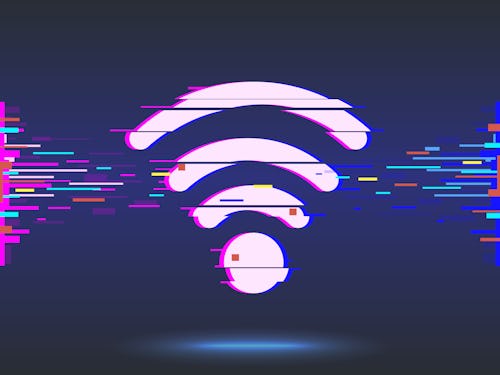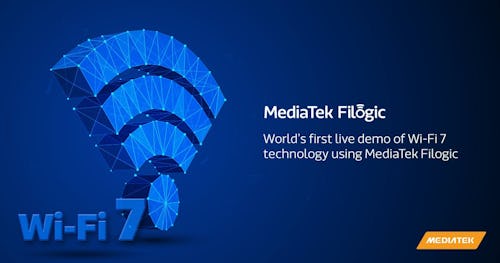
If you thought we were still on Wi-Fi 6, you’re already behind. In a recent test, MediaTek conducted the first live demo of Wi-Fi 7, the official name of which is IEEE 802.11be. The demo was meant to showcase the new standard’s high speeds and low latency transmission specifically for the company’s key customers and collaborators. Eventually, according to Alan Hsu, corporate vice president and general manager of the Intelligent Connectivity business at MediaTek, the tech could render Ethernet wires obsolete:
“The rollout of Wi-Fi 7 will mark the first time that Wi-Fi can be a true wireline/Ethernet replacement for super high-bandwidth applications.”
Hsu even went on to say Wi-Fi 7 can be used in the home, office and industrial environments for a number of applications, including AR / VR, cloud gaming, 4K calls, 8K streaming and more. That means, we theoretically wouldn’t have to decide between spotty Wi-Fi and running messy Ethernet cables along ceilings and doorframes just so we can actually accurately knock the ball around in Rocket League. Fast-paced competitive games over Wi-Fi isn’t the only thing MediaTek has in mind obviously, but still, the Wi-Fi gaming experience could be greatly improved with Wi-Fi 7.

Double the speed —
Alright, so how much faster and more reliable are we talking? According to MediaTek, Wi-Fi 7 will be 2.4 times faster than Wi-Fi 6 speeds, while still using the same 2.4GHz, 5GHz, and the new 6GHz bands and the same number of antennas.
MediaTek said the reason its Wi-Fi 7 Filogic technology is better is because it can use 320Mhz channels, supports 4K quadrature amplitude modulation technology, and has multi-user resource unit features for better interference avoidance and mitigation. That’s a lot of technical jargon, but in a nutshell, Wi-Fi 7 has more bandwidth, can process more data faster, and is better at handling more devices.
Mediatek’s Wi-Fi 7 also introduces multi-link operation technology, which combines multiple channels on different bands at the same time so you won’t ever feel any sort of lag due to congestion or interference versus being connected to a specific band. With this, MediaTek said you’ll get faster and more reliable video streaming, gaming and anything else that requires a constant and sustained Wi-Fi connection.
2023 debut —
If it feels like Wi-Fi standards are moving so fast that our new routers might get a serious case of whiplash, you’re not wrong. The Wi-Fi 6 standard came out in 2019 before it was improved upon to WiFi 6E, which brought along the use of the 6GHz band in January 2020. But we only really just started to see WiFi 6E hardware in 2021, like routers from TP-Link and Netgear.
If you’ve just invested in Wi-Fi 6 technology, don’t worry just yet, your new router will still get some years of use before it goes out of style. MediaTek has been working on the new standard for a while, saying it was involved in the development of the Wi-Fi 7 since its inception and one of the first adopters of the tech. There’s still more work to do and MediaTek said its first products with WiFi 7 capabilities won’t hit the market until 2023.







